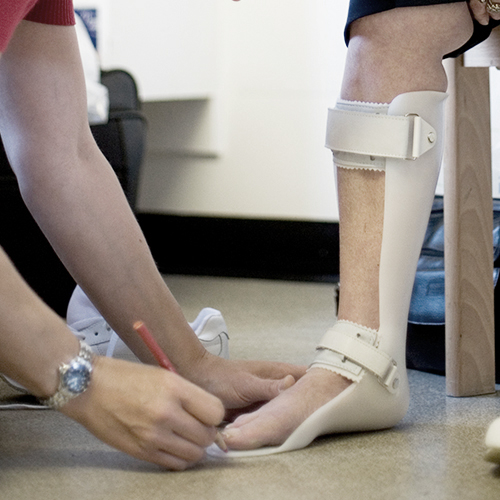What are Orthotics?
Throughout the long term, orthotics have come to depict a large number of items intended to give foot backing and solace. Regardless of this reach, a genuine utilitarian orthotic (as evolved in the center piece of the last hundred years) is characterized by a gadget that is framed from a form of one’s foot while that foot is stood firm on in a subtalar joint unbiased situation. The subtalar joint exists under the lower leg joint, and takes into consideration the foot to straighten and expand its curve Orthotics contingent upon the course of its movement. The impartial position is the point at which the subtalar joint isn’t straightening (pronating) the foot, nor is it making a higher curve (supinating). It has been very much shown that a wide assortment of foot conditions are the consequence of unfortunate mechanics at the subtalar joint. Hyperpronation happens when the subtalar joint takes into account exorbitant pronation than physically commonplace.

The inverse happens in the event that too little pronation is accessible, as the foot becomes ‘cavoid’, or high angled, albeit this is undeniably more uncommon. Many foot issues happen straightforwardly because of hyperpronation, including plantar fasciitis, back tibial tendonitis, Tarsal Passage condition, hammertoes, bunions, and neuromas. An orthotic will be successful by controlling this hyperpronation, hence wiping out the hidden reason for various foot conditions. Utilized alone for treatment, the orthotic won’t almost certainly be gainful as the fiery (torment) some portion of these circumstances actually should be tended to. In any case, as a feature of a diverse treatment plan in which the orthotic is utilized for long haul underlying scaffolding, the orthotic is probably going to give critical advantage. The orthotic configuration should precisely catch an individual’s particular subtalar joint in a nonpartisan situation to give the maximal measure of anatomic underlying scaffolding. By doing this, the orthotic will lessen hyperpronation, permit the foot and leg to work all the more physically, and altogether decrease fundamentally caused foot issues. Orthotics are normally made of a thermoplastic, however other composite materials can be utilized to make them sufficiently flimsy to squeeze into ladies’ dress shoes. Texture topcovers can be utilized, not such a huge amount to increment solace as to give a stage to apply changes to help the finish of the foot. For instance, an orthotic itself runs from the impact point to simply before the wad of the foot. To assist with offloading the bundle of the foot further for specific circumstances, more accommodative cushioning is required further down along the foot past where the orthotic itself closes. This adds further advantage to the orthotic’s capability. Without a topcover, this cushioning can’t be joined to anything. Much of the time however, topcovers are excessive and their nonattendance helps the orthotic fit into a more extensive assortment of shoes. As the orthotic is a solution gadget, a full biomechanical test by a foot expert is required to get the remedy ‘right’, as certain patients require greater change in adjusting the rear of the foot to the front of the foot by changing how the orthotic is calculated, and certain circumstances require more emotional adjustment to the standard cast. These more sensational alterations can incorporate wedges, patterns, higher heel cups and other massive changes to the orthotic’s plastic shell.
And over-the counter embeds?
Over-the-counter embeds have been utilized for a long time for different purposes. As a rule, they give nice cushioning and padding to the curve and bottom of the foot, decreasing shock and in certain plans offering restricted underlying help. Normally, these gadgets comprise of felt, froth, gel, or polymer cushioning intended to drive mass into the curve. A few plans are plastic, imitating orthotics for all intents and purposes, however not capability. These supplements have firmer help, however are not too endured as the unflinching plastic can disturb the tissue on the lower part of the foot as it isn’t really shaped to the wearer’s particular foot, significantly less to a legitimate subtalar joint impartial position. In specific circumstances that essentially need further padding or negligible help, over-the-counter embeds are a fine decision for treatment, and present a practical choice as an underlying treatment for conditions needing further help as long as utilitarian orthotics are at last utilized for long haul control. These supplements might possibly have a place with a class called accommodative orthotics. Albeit this by and large suggests embeds made of a shape of the foot without putting it into a subtalar joint nonpartisan position, the definition has apparently widened to incorporate most all over-the-counter embeds and delicate orthotic-like supplements. These gadgets all in all increment shock retention, helping high angled feet.